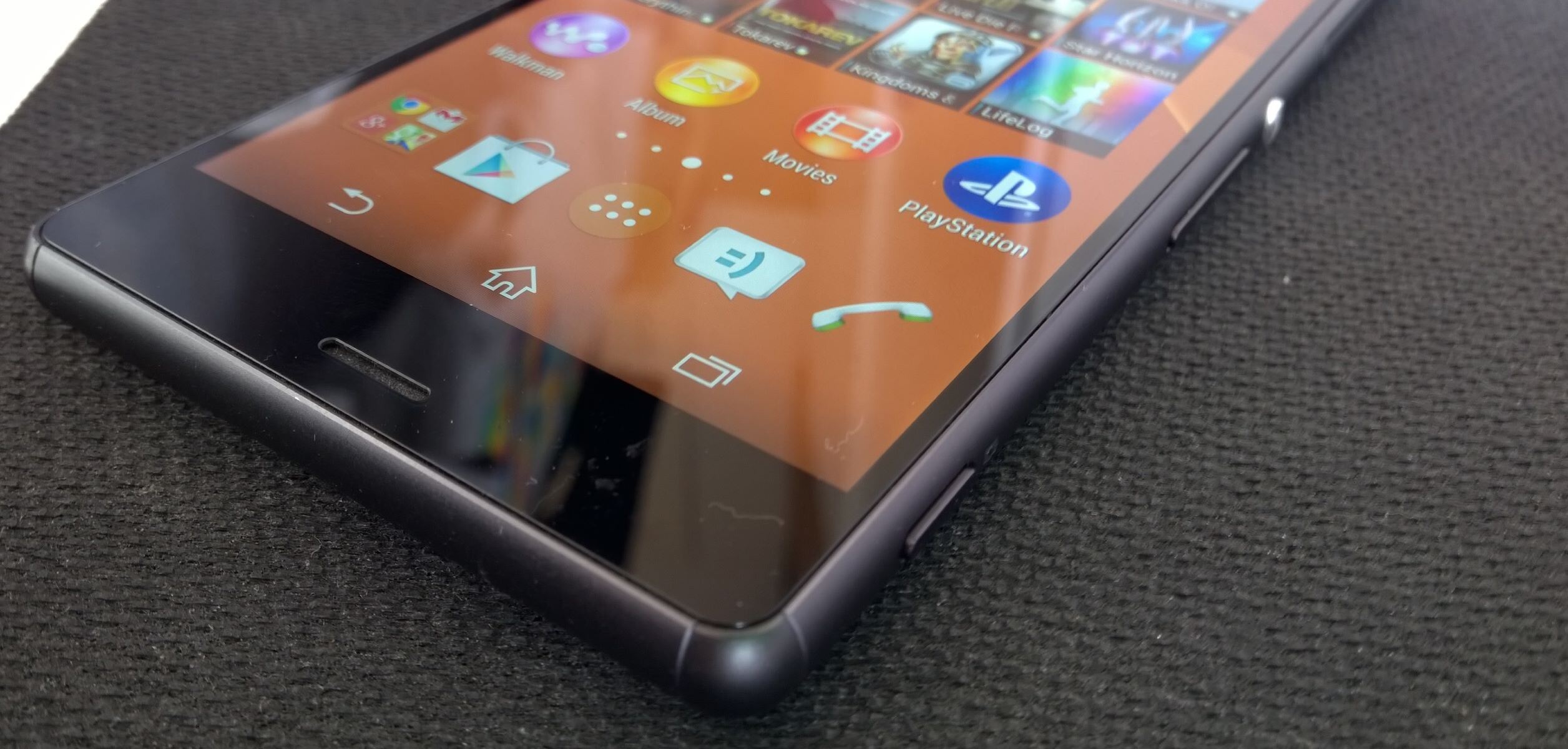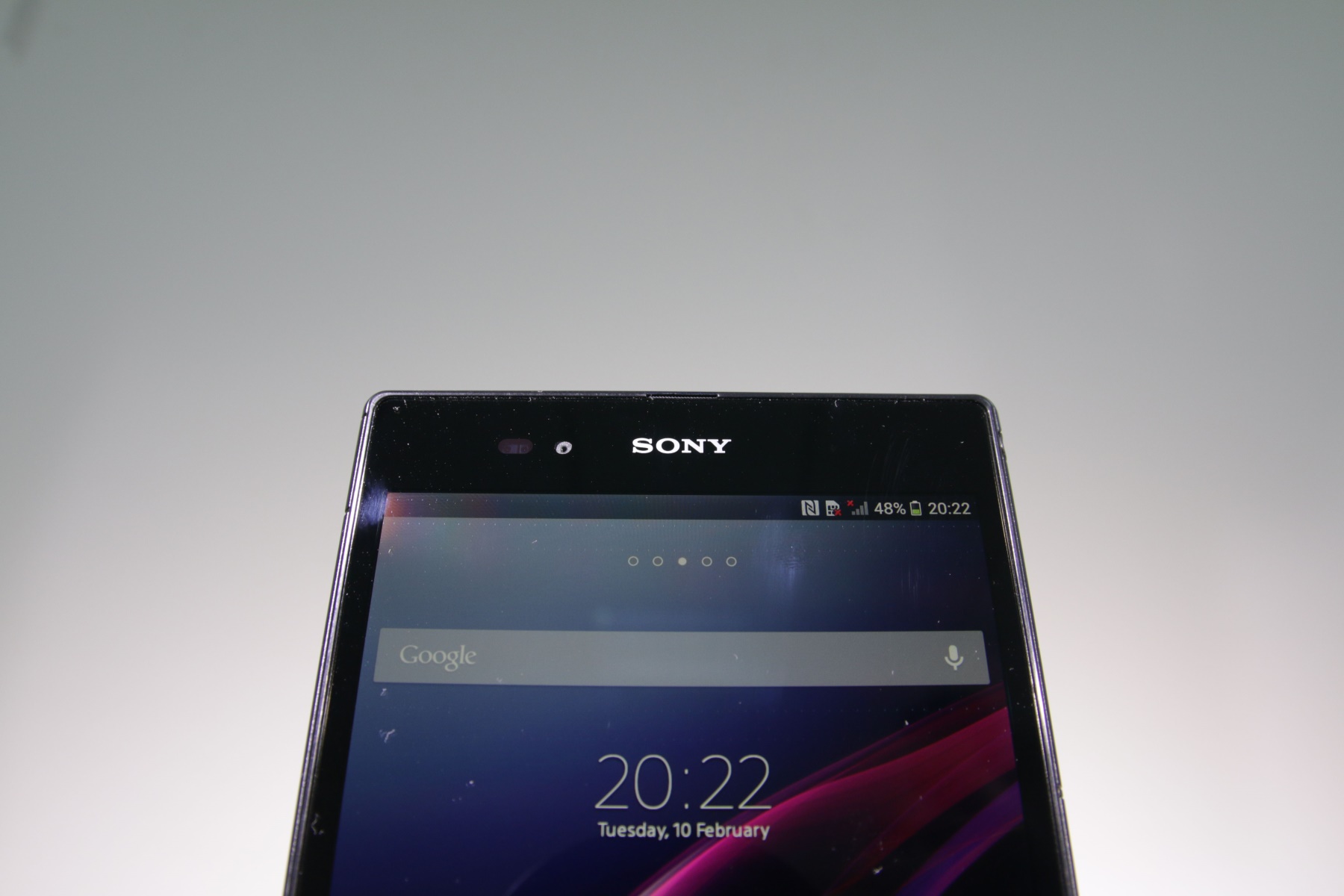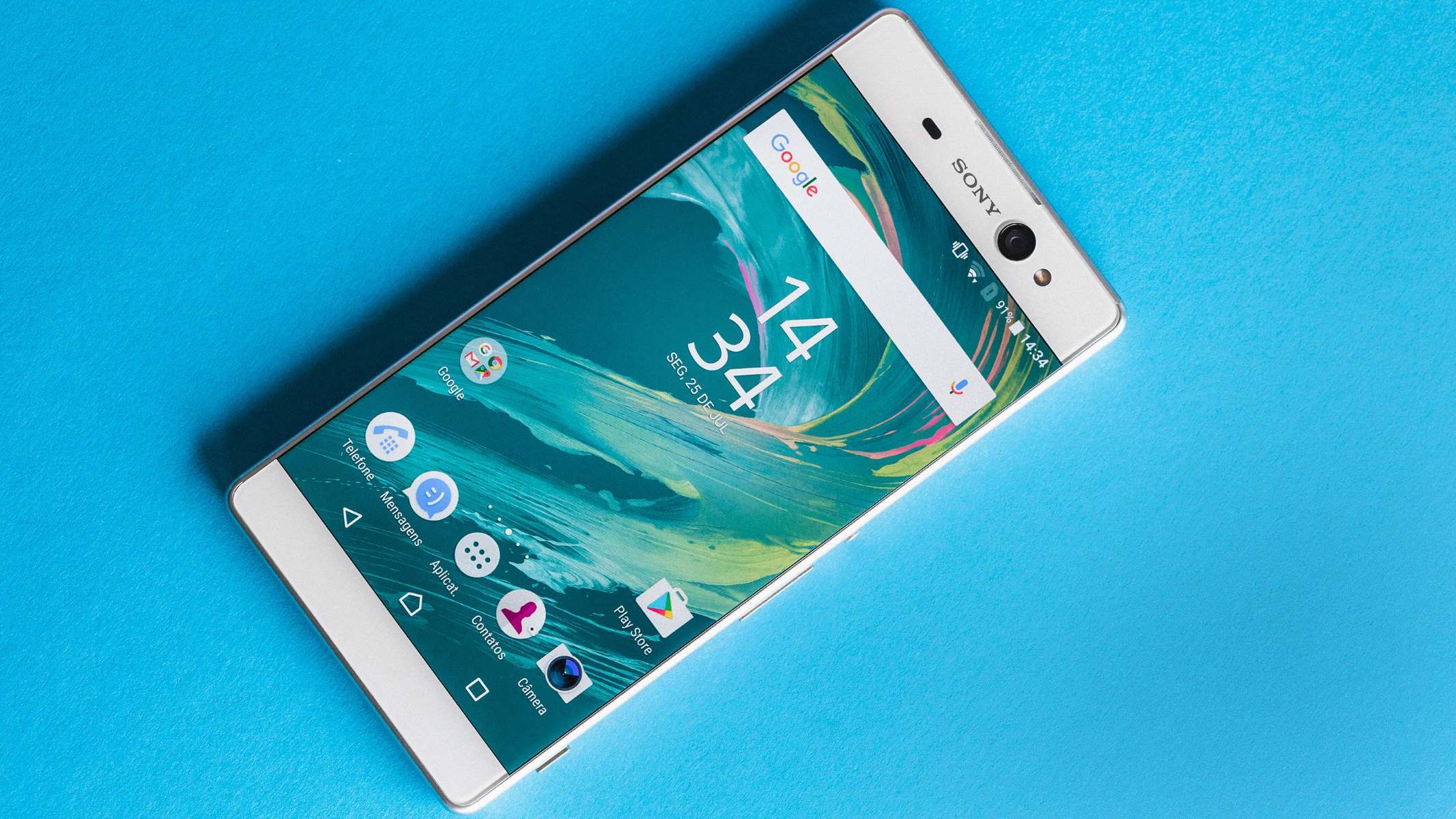Introduction
In the ever-evolving realm of mobile devices, the Sony Xperia series has carved a niche for itself, captivating users with its sleek design, cutting-edge features, and seamless performance. However, for tech enthusiasts and power users seeking to unlock the full potential of their Xperia devices, the concept of "rooting" holds immense allure.
Rooting a Sony Xperia device involves gaining privileged control over the Android operating system, essentially granting users elevated access to customize and optimize their devices beyond the limitations imposed by the manufacturer. This comprehensive guide aims to demystify the intricate process of rooting Sony Xperia devices, empowering users to embark on a journey of exploration and customization while understanding the associated risks and considerations.
As we delve into the intricacies of rooting, it's essential to recognize that this process is not endorsed by the original equipment manufacturer (OEM) and may void the device's warranty. However, the allure of unlocking the full potential of your Sony Xperia device, from enhancing performance to accessing exclusive features, often outweighs these considerations for enthusiasts seeking to push the boundaries of their mobile experience.
Throughout this guide, we will navigate the preparatory steps, including unlocking the bootloader and installing custom recovery, before delving into the actual rooting process. By shedding light on the risks and considerations associated with rooting, we aim to equip users with the knowledge needed to make informed decisions and mitigate potential pitfalls.
Whether you're a seasoned tech aficionado or a curious Xperia user eager to explore the untapped capabilities of your device, this guide is designed to be your trusted companion on the exhilarating journey of rooting your Sony Xperia device. So, fasten your seatbelts and get ready to embark on an adventure that will redefine the way you interact with your Xperia device.
Understanding Rooting
Rooting a Sony Xperia device involves gaining privileged access to the Android operating system, essentially allowing users to modify system files, install custom applications, and unlock a plethora of advanced features. In essence, it grants users administrative control over their devices, akin to the unrestricted access granted to a computer's administrator. This elevated level of access empowers users to delve into the core functionalities of their Xperia devices, enabling them to optimize performance, customize the user interface, and even install specialized apps that require deep system integration.
By rooting your Sony Xperia device, you can unleash a world of possibilities, from overclocking the CPU for enhanced performance to removing pre-installed bloatware that may be consuming valuable resources. Additionally, rooting facilitates the installation of custom ROMs, which are modified versions of the Android operating system, offering unique features, improved performance, and a level of customization that surpasses the stock firmware provided by the manufacturer.
However, it's crucial to recognize that rooting is a double-edged sword. While it offers unparalleled freedom and customization, it also exposes the device to potential security risks and instability if not executed with caution. Moreover, the process of rooting typically voids the device's warranty, as it involves modifying the system beyond the manufacturer's intended configuration.
In essence, understanding rooting entails recognizing the trade-offs involved. It empowers users to transcend the limitations imposed by the OEM, but it also demands a thorough understanding of the associated risks and responsibilities. As we proceed through this guide, we will delve into the preparatory steps and the actual process of rooting, equipping users with the knowledge needed to navigate this exhilarating yet intricate terrain.
Rooting your Sony Xperia device is a transformative journey that opens the door to a realm of customization and optimization. However, it's imperative to approach this endeavor with a comprehensive understanding of the implications and potential consequences. With this knowledge as our compass, let's embark on the preparatory steps, laying the foundation for a seamless and informed rooting experience.
Preparing Your Sony Xperia Device
Before embarking on the exhilarating journey of rooting your Sony Xperia device, it's imperative to lay a solid foundation by preparing the device for the intricate process that lies ahead. This preparatory phase encompasses crucial steps that will not only ensure a smooth rooting experience but also mitigate potential risks and complications.
Back Up Your Data
The first and foremost step in preparing your Sony Xperia device for rooting is to back up all essential data. This includes contacts, photos, videos, documents, and any other valuable information stored on the device. While the rooting process itself does not necessarily entail data loss, it's always prudent to safeguard your data as a precautionary measure.
Enable Developer Options
To facilitate the rooting process, you'll need to enable the Developer Options on your Xperia device. This can be done by navigating to the "Settings" menu, selecting "About Phone," and tapping the "Build Number" seven times. This action will unlock the Developer Options, granting access to advanced settings and debugging features essential for the subsequent steps.
Install USB Drivers
Ensuring that the appropriate USB drivers are installed on your computer is crucial for establishing a seamless connection between the Xperia device and the computer during the rooting process. Sony provides official USB drivers for Xperia devices, which can be downloaded and installed on your computer to facilitate smooth communication between the two devices.
Charge Your Device
Maintaining an adequate battery level on your Xperia device is essential to prevent any interruptions during the rooting process. It's recommended to ensure that the device is sufficiently charged, ideally above 50%, to mitigate the risk of the device powering off unexpectedly during the rooting procedure.
Research Device-Specific Requirements
Each Xperia device may have unique requirements and considerations when it comes to rooting. It's advisable to conduct thorough research specific to your device model, including any prerequisites, potential complications, and best practices recommended by the rooting community. This proactive approach will empower you with the knowledge needed to navigate the rooting process with confidence and clarity.
By meticulously preparing your Sony Xperia device through these essential steps, you are laying a robust groundwork for the subsequent stages of unlocking the bootloader, installing custom recovery, and ultimately rooting your device. With these preparatory measures in place, you are poised to embark on the transformative journey of rooting your Xperia device, unlocking a realm of customization and optimization that awaits beyond the horizon.
Unlocking the Bootloader
The pivotal step of unlocking the bootloader lays the groundwork for the subsequent stages of customizing and optimizing your Sony Xperia device. The bootloader, a fundamental component of the device's firmware, acts as a gatekeeper, restricting the installation of custom software and modifications. By unlocking the bootloader, you effectively dismantle this barrier, paving the way for the installation of custom recovery and the eventual rooting of your Xperia device.
It's important to note that unlocking the bootloader is an irreversible process that typically voids the device's warranty. However, for enthusiasts seeking to delve into the realm of advanced customization and optimization, this step is indispensable.
Preparatory Steps
Before initiating the bootloader unlocking process, ensure that you have completed the preparatory measures outlined in the previous section. This includes backing up essential data, enabling Developer Options, installing USB drivers, and ensuring a sufficient battery level on your Xperia device.
Obtaining Unlock Code
Sony provides an official method for unlocking the bootloader of Xperia devices through its dedicated website. You will need to obtain an unlock code specific to your device by providing the device's IMEI number and other requisite details. This code is essential for initiating the bootloader unlocking process and is unique to each device.
Enabling OEM Unlocking
Once you have obtained the unlock code, you need to enable the OEM unlocking option in the Developer Options of your Xperia device. This can be done by navigating to the Developer Options menu and toggling the OEM unlocking switch. This step is crucial for granting permission to unlock the bootloader using the provided code.
Bootloader Unlocking Process
With the unlock code in hand and the OEM unlocking option enabled, you can proceed to the bootloader unlocking process. This typically involves connecting your Xperia device to a computer, initiating the bootloader unlocking mode, and executing commands through the Android Debug Bridge (ADB) interface. The specific steps may vary slightly based on your device model and the instructions provided by Sony.
Implications and Considerations
It's imperative to acknowledge that unlocking the bootloader initiates a process that irreversibly alters the device's firmware. This action may result in the loss of certain functionalities, security implications, and the aforementioned voiding of the device's warranty. Additionally, it's essential to follow the official instructions provided by Sony meticulously to avoid potential complications or bricking of the device.
By successfully unlocking the bootloader of your Sony Xperia device, you have surmounted a significant milestone in the journey towards rooting and advanced customization. This pivotal step sets the stage for the subsequent installation of custom recovery, which will be explored in the following section, as we continue to unravel the intricacies of rooting your Xperia device.
Installing Custom Recovery
Installing a custom recovery is a critical step in the process of unlocking the full potential of your Sony Xperia device. Custom recovery, such as TWRP (Team Win Recovery Project) or CWM (ClockworkMod Recovery), serves as a powerful tool that enables users to create full device backups, flash custom ROMs, and perform advanced system modifications. This indispensable utility empowers users to transcend the limitations of the stock recovery provided by the manufacturer, opening the door to a realm of customization and optimization.
The installation of custom recovery typically follows the bootloader unlocking process, as it requires elevated privileges and access to the device's firmware. The specific method for installing custom recovery may vary based on the Xperia device model and the preferred custom recovery solution. However, the general steps involve connecting the Xperia device to a computer, initiating the device into fastboot mode or recovery mode, and executing commands to flash the custom recovery image onto the device.
It's imperative to ensure that the custom recovery image is compatible with your Xperia device model to avoid potential complications or bricking of the device. Additionally, following the official instructions provided by the custom recovery developers or the rooting community is crucial to execute this process seamlessly and mitigate any associated risks.
Once the custom recovery is successfully installed on your Sony Xperia device, you gain access to a plethora of advanced functionalities and customization options. From creating full device backups to flashing custom ROMs that offer enhanced features and performance, custom recovery serves as the gateway to a world of possibilities. It also provides a safety net by enabling users to restore the device to a previous state in the event of unforeseen complications or failed modifications.
As you embark on the installation of custom recovery, it's essential to approach this process with meticulous attention to detail and a comprehensive understanding of the implications. By successfully installing custom recovery on your Sony Xperia device, you are poised to take the next stride in the exhilarating journey of rooting, where you will delve into the intricate process of gaining privileged access to the Android operating system.
With custom recovery in place, you are primed to navigate the final stages of the rooting process, culminating in the elevation of your Xperia device to a realm of unparalleled customization and optimization.
Rooting Your Sony Xperia Device
With the preparatory steps of backing up essential data, enabling Developer Options, installing USB drivers, and unlocking the bootloader successfully completed, you are now poised to embark on the transformative process of rooting your Sony Xperia device. Rooting, the pinnacle of customization and optimization, grants you privileged access to the Android operating system, empowering you to modify system files, install specialized applications, and unlock a realm of advanced features that transcend the confines of the stock firmware.
The specific method for rooting your Sony Xperia device may vary based on the device model and the preferred rooting solution. However, the general process involves connecting the Xperia device to a computer, initiating it into a mode conducive to rooting, and executing commands or using specialized software to gain root access. This pivotal step is the culmination of the preparatory measures and the preceding stages of unlocking the bootloader and installing custom recovery, laying the foundation for a seamless and informed rooting experience.
It's essential to approach the rooting process with a comprehensive understanding of the implications and potential risks. Rooting your Sony Xperia device typically voids the manufacturer's warranty and exposes the device to security vulnerabilities if not executed with caution. However, the allure of elevated control and the ability to optimize performance, customize the user interface, and install custom ROMs often outweigh these considerations for enthusiasts seeking to push the boundaries of their mobile experience.
By successfully rooting your Sony Xperia device, you unlock a world of possibilities, from overclocking the CPU for enhanced performance to removing pre-installed bloatware that may be consuming valuable resources. Rooting also paves the way for installing specialized applications that require deep system integration, further enhancing the device's capabilities and personalizing the user experience.
As you navigate the intricate process of rooting your Sony Xperia device, it's imperative to follow the official instructions provided by the rooting community or the developers of the rooting solution. This meticulous approach ensures a seamless rooting experience and mitigates the risk of potential complications or adverse effects on the device's stability.
Rooting your Sony Xperia device is a transformative journey that opens the door to a realm of unparalleled customization and optimization. With root access in your hands, you are poised to explore the full potential of your Xperia device, unlocking a world of customization and advanced features that redefine the way you interact with your device.
In the next section, we will delve into the crucial aspect of managing root access, empowering you to wield this elevated privilege responsibly and effectively as you navigate the dynamic landscape of rooted functionality.
Managing Root Access
Managing root access on your rooted Sony Xperia device is a pivotal aspect of wielding this elevated privilege responsibly and effectively. Root access grants you administrative control over the Android operating system, empowering you to modify system files, install specialized applications, and unlock a realm of advanced features. However, it's imperative to approach the management of root access with a comprehensive understanding of the implications and potential risks.
One of the key considerations in managing root access is exercising caution when granting root permissions to applications. While root access empowers you to install and utilize applications that require deep system integration, it's essential to scrutinize the permissions requested by such applications. Granting unrestricted root access to unverified or potentially malicious applications can expose your device to security vulnerabilities and compromise its stability. Therefore, it's prudent to evaluate the necessity and trustworthiness of applications before granting them root permissions.
Furthermore, managing root access entails staying informed about system updates and security patches released by the OEM or the rooting community. Rooted devices may require specialized handling during the update process to ensure the preservation of root access and the seamless integration of the latest security enhancements. Staying abreast of the best practices for updating rooted devices is crucial to maintain the device's stability and security while retaining root privileges.
Another vital aspect of managing root access is exercising discretion when making system-level modifications. Root access empowers you to delve into the core functionalities of the device, but it also demands a meticulous approach to avoid unintended consequences. Whether it involves customizing system files, optimizing performance parameters, or installing custom ROMs, each modification should be approached with thorough research and a comprehensive understanding of its implications.
Moreover, it's essential to engage with the vibrant rooting community to stay informed about the latest developments, best practices, and potential security vulnerabilities associated with rooted devices. Participating in forums, seeking guidance from experienced users, and contributing to the collective knowledge base fosters a dynamic ecosystem that enriches the rooting experience and ensures that root access is managed responsibly.
In essence, managing root access on your Sony Xperia device demands a balanced approach that combines the freedom of customization with a conscientious understanding of the associated responsibilities. By exercising caution when granting root permissions, staying informed about system updates, and engaging with the rooting community, you can effectively harness the power of root access while safeguarding the stability and security of your device.
Risks and Considerations
Rooting your Sony Xperia device is an exhilarating endeavor that unlocks a realm of customization and optimization. However, it's imperative to tread this path with a comprehensive understanding of the risks and considerations associated with rooting. By delving into the intricacies of rooting, users can make informed decisions and mitigate potential pitfalls, ensuring a seamless and informed rooting experience.
One of the primary considerations when contemplating rooting your Sony Xperia device is the potential voiding of the manufacturer's warranty. Rooting involves modifying the device's firmware beyond the intended configuration, which typically results in the forfeiture of the warranty. This implies that any hardware or software issues that arise after rooting may not be covered by the manufacturer, necessitating a thorough assessment of the trade-offs involved.
Furthermore, rooting exposes the device to potential security vulnerabilities if not executed with caution. Gaining elevated access to the Android operating system opens the door to system-level modifications and the installation of applications with deep system integration. While this empowers users to optimize performance and access advanced features, it also increases the risk of malicious applications exploiting root access, potentially compromising the device's security and stability.
Another crucial consideration is the potential for unintended consequences when making system-level modifications. Root access grants users administrative control over the device, enabling them to customize system files, overclock the CPU, and install custom ROMs. However, each modification demands a meticulous approach, as improper alterations can lead to system instability, performance issues, or even render the device inoperable if not executed with precision.
Moreover, the process of unlocking the bootloader and installing custom recovery, essential preparatory steps for rooting, demands careful attention to detail. Mishandling these procedures can result in irreversible damage to the device, commonly referred to as "bricking." This underscores the importance of following official instructions meticulously and conducting thorough research specific to the device model to mitigate the risk of potential complications.
In essence, the decision to root your Sony Xperia device necessitates a comprehensive evaluation of the associated risks and considerations. While rooting unlocks a world of possibilities, from advanced customization to enhanced performance, it demands a balanced approach that acknowledges the potential trade-offs and responsibilities. By navigating these considerations with prudence and a thorough understanding of the implications, users can embark on the rooting journey with confidence and clarity.
Conclusion
In conclusion, the journey of rooting your Sony Xperia device is a transformative exploration that unveils a realm of unparalleled customization and optimization. Throughout this comprehensive guide, we have navigated the intricate landscape of rooting, from the preparatory measures of backing up essential data and unlocking the bootloader to the pivotal steps of installing custom recovery and gaining root access. This exhilarating journey empowers users to transcend the limitations of the stock firmware, unlocking a world of possibilities that redefine the way they interact with their Xperia devices.
Rooting, the pinnacle of customization, grants users privileged access to the Android operating system, enabling them to modify system files, install specialized applications, and unlock a plethora of advanced features. However, it's essential to approach this endeavor with a comprehensive understanding of the associated risks and considerations. Rooting typically voids the manufacturer's warranty, exposes the device to potential security vulnerabilities, and demands a meticulous approach to system-level modifications. By acknowledging these considerations, users can make informed decisions and navigate the rooting process with confidence and clarity.
The management of root access, a pivotal aspect of the rooting journey, demands a balanced approach that combines the freedom of customization with a conscientious understanding of the associated responsibilities. Exercising caution when granting root permissions, staying informed about system updates, and engaging with the rooting community fosters a dynamic ecosystem that enriches the rooting experience and ensures that root access is managed responsibly.
As users embark on the transformative journey of rooting their Sony Xperia devices, it's imperative to approach this endeavor with a proactive mindset, conducting thorough research specific to the device model and following official instructions meticulously. By doing so, users can mitigate potential pitfalls and complications, ensuring a seamless and informed rooting experience that unlocks the full potential of their Xperia devices.
In essence, the decision to root your Sony Xperia device is a reflection of your enthusiasm for exploration and customization. It's a testament to your desire to push the boundaries of your mobile experience and unlock a world of advanced features and performance enhancements. By embracing the knowledge and insights shared in this guide, you are poised to embark on a journey that will redefine the way you interact with your Xperia device, unlocking a realm of customization and optimization that awaits beyond the horizon.

























